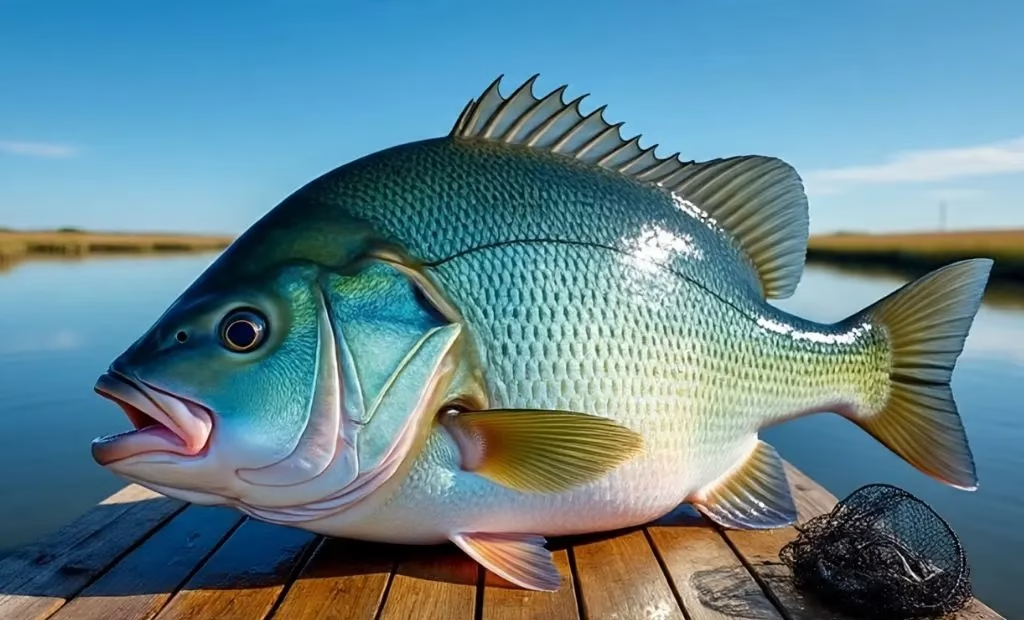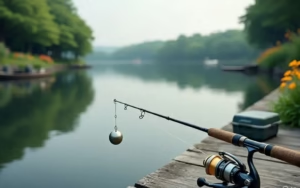The Biggest Bluegill Ever Caught fishing is more than just a hobby in the U.S; it’s a tradition. From small farm ponds in the Midwest to massive reservoirs in the South, anglers of all ages have spent their childhoods hunting the bluegill, one of the most sought-after panfish. Because of its powerful strikes, fierce battles relative to its size, and delicious flavor, the bluegill has long been a favorite among American fishermen. But when we talk about the largest bluegill ever caught, things get really interesting.
The Official World Record of Bluegill
On April 9, 1950, a fisherman named T.S. Hudson caught Biggest Bluegill ever Caught measured. This famous fish, weighing 4 pounds, 12 ounces, was caught in Ketona Lake in Alabama. In contrast, the typical bluegill harvested in the US weighs less than a pound. This suggests that Hudson caught fish that were nearly five times larger than the typical catch. This record is long, even remarkable. Over 70 years later, the record remains in effect. No fisherman has officially surpassed Hudson’s massive trophy, despite numerous reports of catching enormous bluegills.

Why Was Ketona Lake So Special?
The story wouldn’t be complete without knowing the name of the lake where Biggest Bluegill Ever Caught captured. A quarry pit called Ketona Lake filled with water after mining operations ended. It is a good environment that produces unusually big bluegill. The heavy water, abundance of food, and lack of bluegill fishing pressure allowed fish to grow to amazing sizes.
How Big Can a Bluegill Get?
When they hear about a record Biggest Bluegill that weighed nearly five pounds, anglers often wonder just how big these fish can get. In most lakes and ponds, two-pound bluegills are considered trophies. Almost nothing weighs more than three pounds. The fish from Ketona Lake was a remarkable outlier, which is why the record has stood for so long. Large bluegills, however, are found across the country. Lakes in Texas, Illinois, Minnesota, Michigan, and Alabama have reported bluegills weighing two to three pounds.
How to Catch a Trophy Bluegill: A Comprehensive Guide
If the story of the Biggest Bluegill ever caught has piqued your interest, you might be wondering how to improve your chances of capturing a trophy fish. Even though that you will not break a world record, you can improve your chances with the right skills . The first thing to think about should be the location. Because large bluegills are not having everywhere, you should focus on lakes, reservoirs, and ponds with strong, healthy ecosystems. States that are known for producing trophy-size panfish in the US, such as Alabama, Florida, and Minnesota, are good places to start your search. Time is yet another important factor.
The Justifications for the Record’s Validity
You might wonder why, in spite of improvements in sonar, technology, and equipment, the record for the largest bluegill ever caught has not been broken. The truth is found in nature itself. The Biggest Bluegill fish typically don’t live long enough to reach such massive sizes. The perfect balance of habitat, food supply, fishing pressure, and genetics must exist for one to grow to that size. In addition, most lakes that once could produce such animals now have different conditions.
Can the Record Be Broken?
Some fishermen believe they will soon catch a bluegill that weighs more than 4 pounds, 12 ounces. There are those who think that the record will never be surpassed. In the United States, there are still stories of large The Biggest Bluegills Ever Caught weighing over three pounds, but breaking Hudson’s record will be extremely difficult. Fisheries managers in some states are working to improve habitat and restrict harvest in an effort to increase panfish size.
The History of the Biggest Bluegill Ever Captured
The story of the biggest bluegill ever caught is not just easy and it do not found easily . It represents the thrill of American fishing and the hope that the fish of a lifetime will be caught on the next throw. Because of Hudson’s capture, generations of fishermen—young and old—have been hunting giant panfish for decades. Even if you never break the record, chasing trophy bluegills is one of the most rewarding freshwater fishing experiences. Every throw presents the chance to set a new personal record, and every catch contributes to the experiences that make fishing so special.
Conclusion
The tale of the world’s biggest bluegill ever caught is one of those rare fishing stories that has truly stood the test of time. From the quarry waters of Alabama where T.S. Hudson landed his legendary catch back in 1950, to lakes and ponds scattered across America today, anglers still dream of hooking a bluegill of that size. While breaking the record may seem nearly impossible, the story continues to inspire fishermen and women of all ages to head out with their rods, cast a line, and chase the possibility of catching their own trophy.




